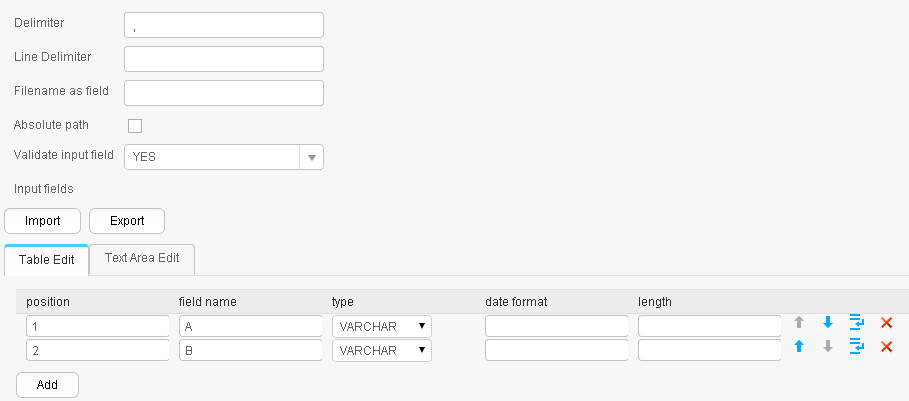CSV File Input¶
Overview¶
The CSV File Input operator imports all files that can be opened by using a text editor.
Input and Output¶
Input: test files
Output: fields
Parameter Description¶
Parameter | Description | Type | Mandatory | Default Value |
|---|---|---|---|---|
Delimiter | Delimiter in a CSV file for separating data lines. | string | Yes | , |
Line Delimiter | Line delimiter, which can be any string specified by users based on the actual situation. The OS line delimiter is used by default. | string | No |
|
Filename as field | User-defined field whose value is the name of the file that stores the current data. | string | No | None |
Absolute path | Indicates whether the file name used as the value of Filename as field contains an absolute path. Selecting the option button indicates that the file name contains an absolute path; deselecting the option button indicates that the file name does not contain a path. | boolean | No | Deselect |
Validate input field | Checks whether the input field matches the value type. If the value is NO, no check is performed. If the value is YES, whether the input field matches the value type is checked. If the input fields do not match the value type, the line is skipped. | enum | Yes | YES |
Input fields | Information about input fields:
| map | Yes | None |
Data Processing Rule¶
Each data line is separated into multiple fields by using delimiters and the fields are used by the subsequent conversion operator.
If the field value does not match the actual type, the data in the line will become dirty data.
If the number of input field columns is equal to the number of field columns actually included in the original data, the data in the line will become dirty data.
Example¶
The following figure shows the source file.

Configure the CSV File Input operator, set Delimiter to a comma (,), and generate fields A and B.

Fields A and B are generated, as shown in the following figure.
